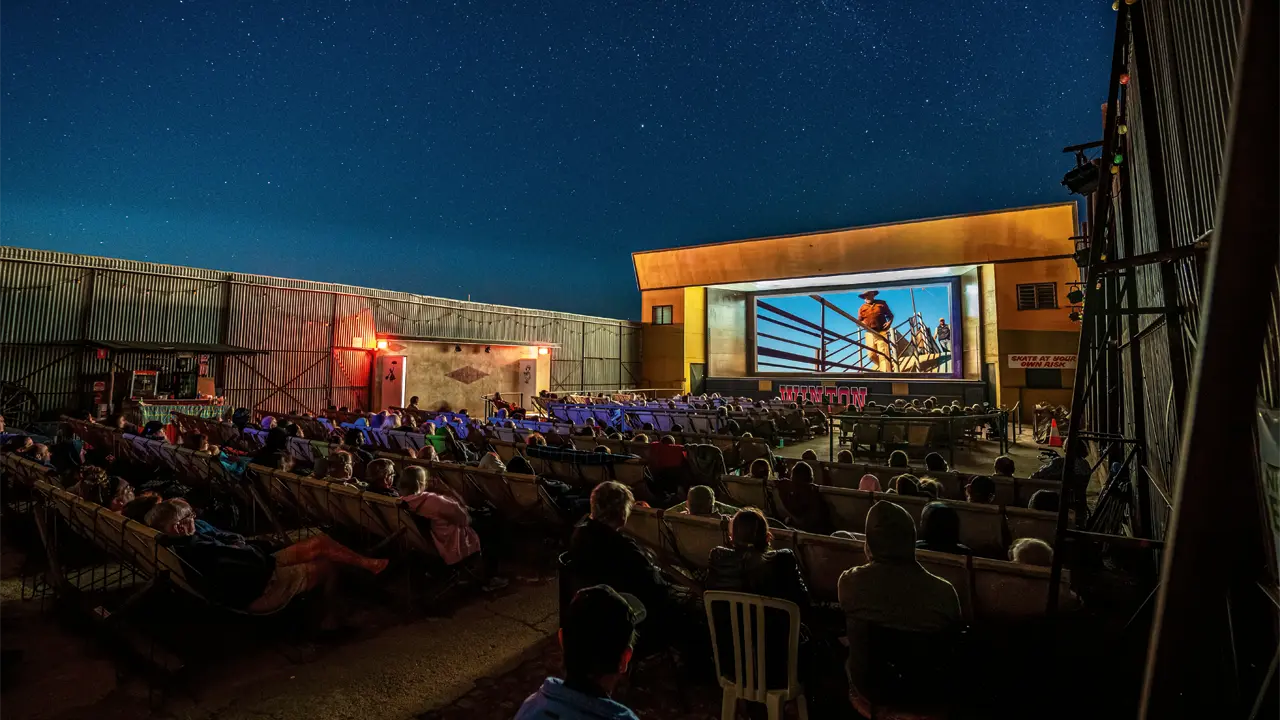The reel story of Australia's heartland on screen.
Story Kate Newsome Photo Leeroy Todd
The towering movie screen has the luminescence of an opal, set into the gold and sun-scorched outback. Summer days shimmer through the sand- and siltstone surrounds of Coober Pedy, SA, the mining town home to the state’s last drive-in picture theatre. It may be one of the most remote cinemas on the planet.
As the majority of Coober Pedians live in labyrinthine dugouts to escape the desert heat, they were protected when a storm whipped through town on Wednesday, November 15, 2023. Above ground, 120km/h winds peeled away half the drive-in screen like opening a tin of sardines. “It was a big blow for Coober Pedy … whether you go every week or not, it’s just part of the landscape,” says Dan Measey, a second-generation opal miner and local who petitioned to save the cinema.
It wasn’t until 13 months after the storm, on Christmas Eve last year, that Dan was awarded tender for the job. “There was a bit of unrest in the delay to have the repairs done,” he says. “Sometimes those wheels of insurances and councils turn slowly.”
Braving the blustery 45°C weather on cherry pickers, he and a team of local tradesmen began restoring the rotting timber structure and 5-storey-high screen: 81 steel sheets fixed with 4,100 screws and 152L of paint for a 3-coat finish. Dan and his team had the drive-in ready for the March 22 grand re-opening and the 2025 tourist season – in time for the projector to whir back into life and for audiences to tune in their car radios.
Before volunteers built the drive-in in 1965, movies were projected in the corrugated community hall. The new drive-in screen offered a chance to gather and be entertained from reclined seats, deck chairs and truck trays.
One night in 1967, a medical emergency in Coober Pedy called for the Royal Flying Doctor Service. The drive-in’s speaker system sizzled with an announcement: could the audience please drive to the airstrip? Car headlights sped out in convoy to light the plane’s landing and take-off, before zipping back to catch the end of the film.
For decades, audiences have filtered in and out of these drive-in gates – kept open with the same stubborn persistence that defines Australian filmmaking. In its heyday, the Coober Pedy drive-in showed 8 films a week, but as television and VHS boomed, business went bust in 1984. Projector reinstalled, collapsed canteen ceiling and screen revamped, the cinema reopened as the private ‘Desert Drive’ in the 1990s. A decade later, volunteers took over, projecting films that are now digitised.
“All the lights go off around you,” says Chantelle Bamford, the drive-in committee’s chair. “The night sky in the outback by itself is amazing because there’s no city noise, there are no city lights. It’s just you and the stars pretty much. And then you add the screen to it and it’s just beautiful.”
This story excerpt is from Issue #160
Outback Magazine: April/May 2025










